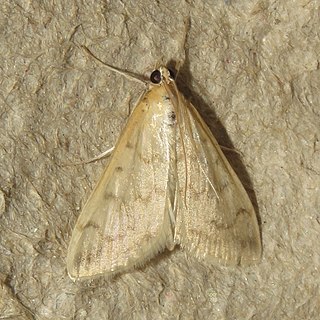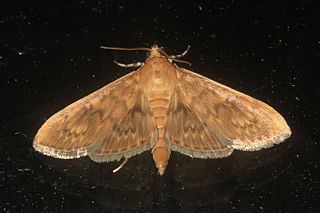
The National Museum of Natural History (NMNH) is a natural history museum administered by the Smithsonian Institution, located on the National Mall in Washington, D.C., United States. It has free admission and is open 364 days a year. With 4.4 million visitors in 2023, it was the second most-visited museum in the United States.

Pamela Cecile Rasmussen is an American ornithologist and expert on Asian birds. She was formerly a research associate at the Smithsonian Institution in Washington, D.C., and is based at the Michigan State University. She is associated with other major centers of research in the United States and the United Kingdom.

Doidae is a small family of Lepidoptera with an exclusively New World distribution, with species occurring in Central America, the south-western United States, and northern South America.

Urodidae, whose species are commonly known as false burnet moths, is a family of moths in the lepidopteran order. It is the type genus in the superfamily, Urodoidea, with three genera, one of which, Wockia, occurs in Europe.

Elophila fulvalis is a moth in the family Crambidae. It was described by George Hampson in 1899. It is found in South America, where it has been recorded from Paraná, Brazil.

Aeolopetra phoenicobapta is a moth in the family Crambidae. It was described by George Hampson in 1898. It is found in New Guinea, where it has been recorded from Fergusson Island.
Hahncappsia volcanensis is a moth in the family Crambidae described by Hahn William Capps in 1967. It is found in Guatemala, Costa Rica and Venezuela.

Hahncappsia pergilvalis is a moth in the family Crambidae. It was described by George Duryea Hulst in 1886. It is found in North America, where it has been recorded from Ontario and the north-eastern and south-western United States. It is also present in Mexico, where it has been recorded from the Federal District, Puebla and Jalisco.
Helvibotys helvialis is a moth in the family Crambidae. It was described by Francis Walker in 1859. It is found in North America, where it has been recorded from California to Florida, north in the east to Massachusetts, Quebec, Ontario, Michigan and Iowa.
Eudonia excursalis is a moth in the family Crambidae. It was described by Harrison Gray Dyar Jr. in 1929. It is found in Costa Rica.
Eudonia inexoptata is a moth in the family Crambidae. It was described by Harrison Gray Dyar Jr. in 1929. It is found in Mexico.

Eudonia leucophthalma is a moth in the family Crambidae. It was described by Harrison Gray Dyar Jr. in 1929. It is found in North America, where it has been recorded from British Columbia and Alberta to Washington and California.
Eudonia vinasalis is a moth in the family Crambidae. It was described by Harrison Gray Dyar Jr. in 1929. It is found in Costa Rica.
Eudonia ycarda is a moth in the family Crambidae. It was described by Harrison Gray Dyar Jr. in 1929. It is found in Guatemala and Orizaba, Mexico.
Scoparia denigata is a moth in the family Crambidae. It was described by Harrison Gray Dyar Jr. in 1929. It has been recorded from the US state of Arizona.
Scoparia ulmaya is a moth in the family Crambidae. It was described by Harrison Gray Dyar Jr. in 1929. It is found on the West Indies, where it has been recorded from Guadeloupe.
Mimudea brunneicilialis is a moth in the family Crambidae. It was described by George Hampson in 1913. It is found in Indonesia, where it has been recorded from the Bacan Islands.

Psara dryalis is a species of moth in the family Crambidae. It was described by Francis Walker in 1859. It is found in the Dominican Republic, Puerto Rico, Jamaica, Cuba and from the south-western United States to Central America.

Antaeotricha albulella, the vestal moth, is a moth in the family Depressariidae. It was described by Francis Walker in 1864. It is found in the United States where it has been recorded from Alabama, Florida, Georgia, Louisiana, Maryland, Mississippi, New Jersey, North Carolina, Oklahoma, South Carolina, Texas and West Virginia.
Nites betulella, the black-dotted birch leaftier moth, is a moth in the family Depressariidae. It was described by August Busck in 1902. It is found in North America, where it has been recorded from Nova Scotia, southern Canada, the north-eastern United States, British Columbia and Wisconsin.









